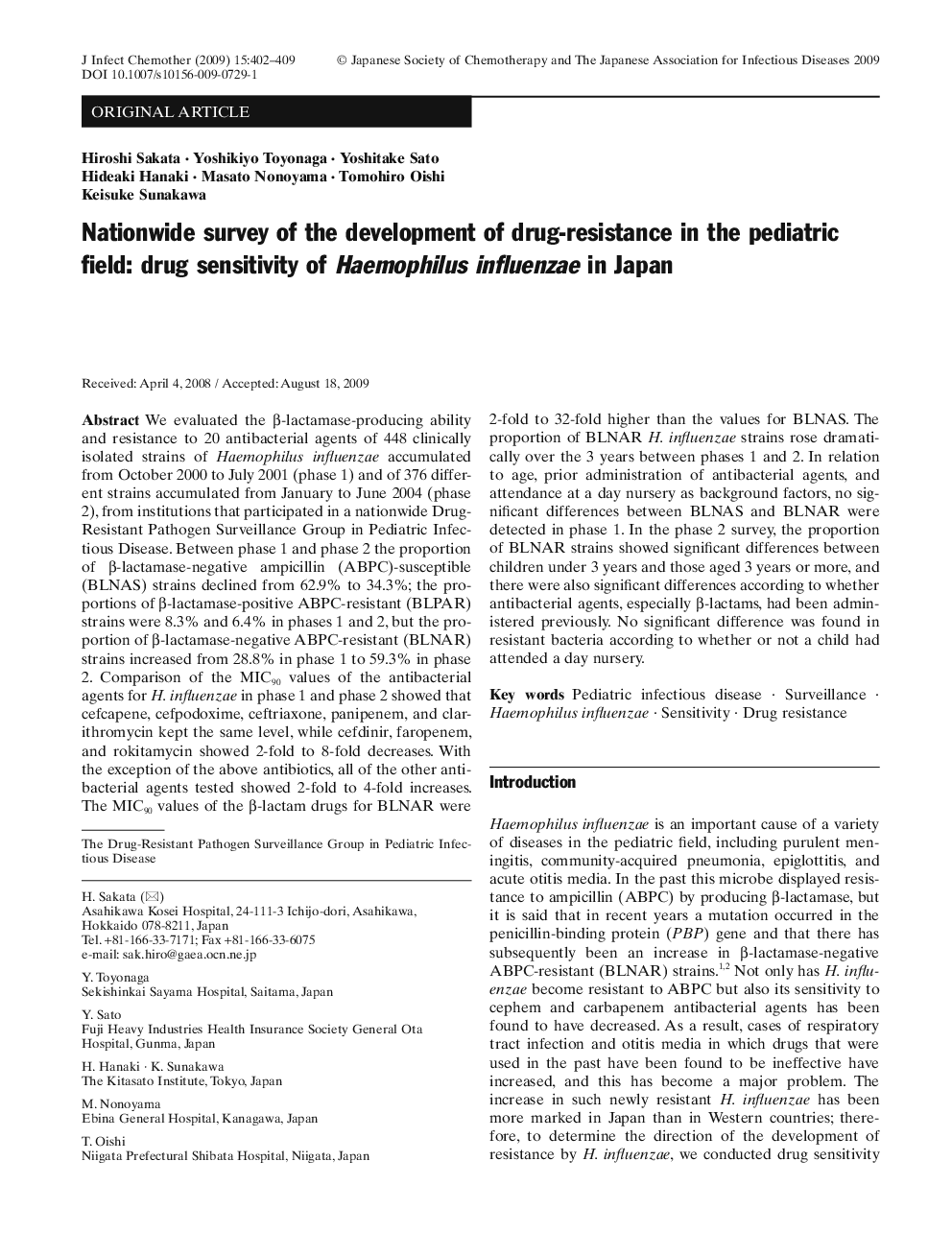| کد مقاله | کد نشریه | سال انتشار | مقاله انگلیسی | نسخه تمام متن |
|---|---|---|---|---|
| 3377250 | 1219969 | 2009 | 8 صفحه PDF | دانلود رایگان |

We evaluated the β-lactamase-producing ability and resistance to 20 antibacterial agents of 448 clinically isolated strains of Haemophilus influenzae accumulated from October 2000 to July 2001 (phase 1) and of 376 different strains accumulated from January to June 2004 (phase 2), from institutions that participated in a nationwide Drug-Resistant Pathogen Surveillance Group in Pediatric Infectious Disease. Between phase 1 and phase 2 the proportion of β-lactamase-negative ampicillin (ABPC)-susceptible (BLNAS) strains declined from 62.9% to 34.3%; the proportions of β-lactamase-positive ABPC-resistant (BLPAR) strains were 8.3% and 6.4% in phases 1 and 2, but the proportion of β-lactamase-negative ABPC-resistant (BLNAR) strains increased from 28.8% in phase 1 to 59.3% in phase 2. Comparison of the MIC90 values of the antibacterial agents for H. influenzae in phase 1 and phase 2 showed that cefcapene, cefpodoxime, ceftriaxone, panipenem, and clarithromycin kept the same level, while cefdinir, faropenem, and rokitamycin showed 2-fold to 8-fold decreases. With the exception of the above antibiotics, all of the other antibacterial agents tested showed 2-fold to 4-fold increases. The MIC90 values of the β-lactam drugs for BLNAR were 2-fold to 32-fold higher than the values for BLNAS. The proportion of BLNAR H. influenzae strains rose dramatically over the 3 years between phases 1 and 2. In relation to age, prior administration of antibacterial agents, and attendance at a day nursery as background factors, no significant differences between BLNAS and BLNAR were detected in phase 1. In the phase 2 survey, the proportion of BLNAR strains showed significant differences between children under 3 years and those aged 3 years or more, and there were also significant differences according to whether antibacterial agents, especially β-lactams, had been administered previously. No significant difference was found in resistant bacteria according to whether or not a child had attended a day nursery.
Journal: Journal of Infection and Chemotherapy - Volume 15, Issue 6, 2009, Pages 402-409